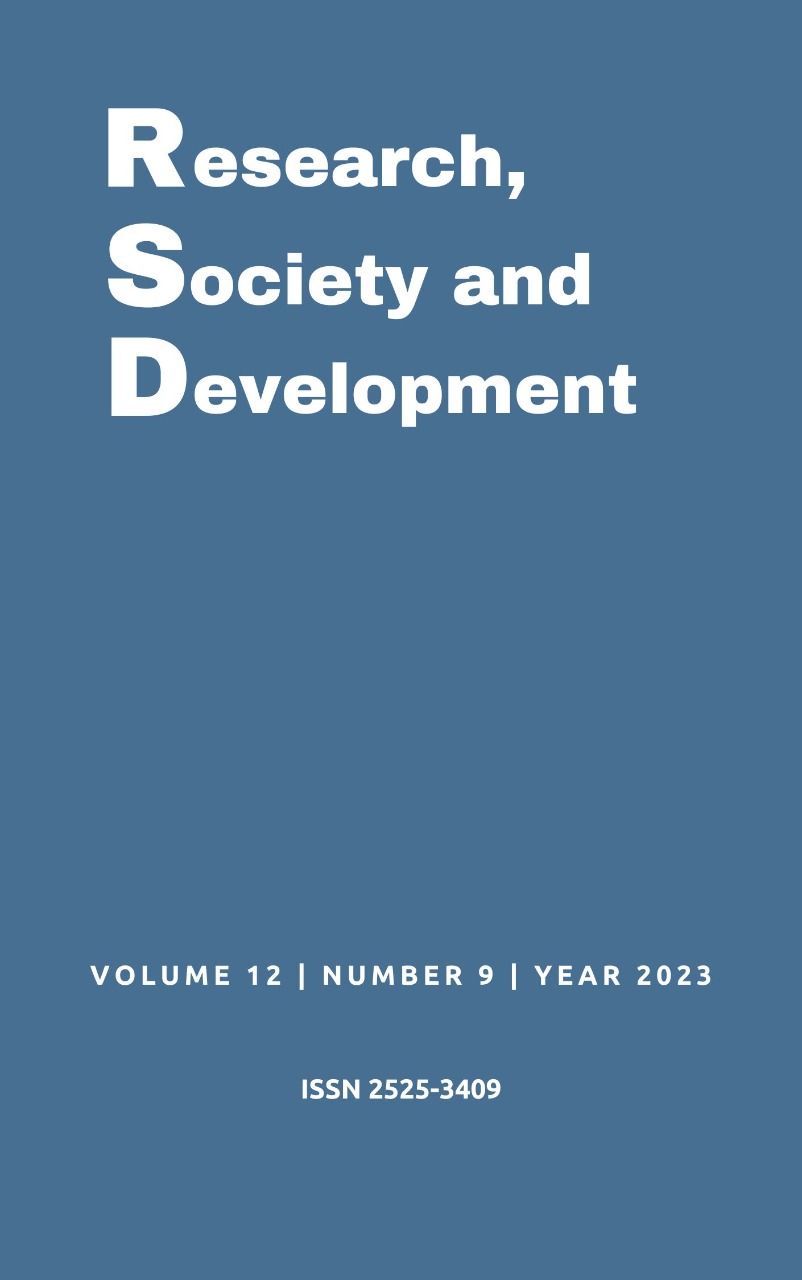Analysis of the epidemiological profile of arboviruses (dengue, zika and chikungunya) from 2020-2022 in Brazil
DOI:
https://doi.org/10.33448/rsd-v12i9.43229Keywords:
Dengue, Zika, Chikungunya, Arboviruses, Epidemiology.Abstract
Brazil is experiencing an epidemic that has lasted more than 10 years, and this epidemic is caused by arboviruses. Taking this scenario into account, this article proposes to evaluate the epidemiological profile of patients who are more predisposed to being infected by Arboviruses: Dengue, Zika and Chikungunya. This is a descriptive, retrospective, quantitative study on the epidemiological profile of the arboviruses dengue, Zika and Chikungunya in Brazil between the years 2020 and 2022 through the collection and analysis of data obtained by the Notifiable Diseases Information System (SINAN ), General Coordination of Arbovirus Surveillance of the Department of Immunization and Communicable Diseases of the Health Surveillance Secretariat (CGARB/DEIDT/SVS), Ministry of Health (DATASUS) and the Health Surveillance Secretariat (SVS). Analyzes were carried out by calculating relative frequencies, absolute frequencies, means and standard deviation for the statistical interpretation of the data obtained. After evaluating the data, it was identified that the profile of the patient contracting dengue is: A patient who resides in the Southeast, in São Paulo, aged 20-39 years, of brown or white race, female, in the period between the 7th and the 20th week of the year. The other profile is shared by the two arboviruses Zika and Chikungunya, he is: A patient who resides in the Northeast, unique to Bahia, aged 20-39 years, of mixed race, female, who is in the period between 7th and 20th week.
References
Boas, V. et al. (2011). Triagem sorológica e influência do conhecimento sobre a dengue em pacientes do ambulatório de especialidades do SUS. Jornal Brasileiro de Medicina Laboratorial. https://www.scielo.br/j/jbpml/a/KcSYTYbyfb6R6xvbBZRLW6Q/?lang=pt.
Brasil. (2022). Boletim epidemiológico volume 53º Maio 2022. Casos graves e óbitos por dengue no Brasil, 2019 a 2022. Ministério da Saúde.
Brasil. (2020). Monitoramento dos casos de arboviroses urbanas transmitidas pelo Aedes Aegypti (dengue, chikungunya e zika), semanas epidemiológicas 1 a 50, 2020. Ministério da Saúde.
Brasil. (2022). Monitoramento dos casos de arboviroses até a semana epidemiológica 52 de 2022. Ministério da Saúde.
Brasil. (2021). Monitoramento dos casos de arboviroses urbanas causados por vírus transmitidos pelo mosquito Aedes (dengue, chikungunya e zika), semanas epidemiológicas 1 a 51, 2021. Ministério da Saúde.
Brasil, (2022). Plano de contingência para resposta às emergências em saúde pública por Dengue, Chikungunya e Zika. Ministério da Saúde.
Cleiton, N. et al. (2023). Come fly with me: Review of clinically important arboviruses for global travelers. https://www.sciencedirect.com/
science/article/abs/pii/S1386653212002570?via%3Dihub.
Conteville, L. et al. (2016). Phylogenetic analyses of chikungunya virus among travelers in Rio de Janeiro, Brazil, 2014-2015. Memórias do Instituto Oswaldo Cruz. 111(5), 347-8.
Fiocruz, (2023). Dengue, chikungunya e zika: conheça as diferenças. https://portal.fiocruz.br/noticia/dengue-chikungunya-e-zika-conheca-di
ferencas.
IBGE. (2022). Características gerais dos domicílios e dos moradores 2022. Instituto Brasileiro de Geografia e Estatística (IBGE). https://biblioteca.ibge.gov.br/visualizacao/livros/liv102004_informativo.pdf.
Lakatos, E. et al. (2021). Fundamentos de metodologia científica. (9a ed.), Atlas,
Lima, C. et al. (2016). Arboviroses emergentes e novos desafios para a saúde pública no Brasil. Revista de Saúde Pública, 50(36), 1-7.
Lourenzo, J. et al. (2022). Measuring the effects of COVID-19-related disruption on dengue transmission in southeast Asia and Latin America: a statistical modelling study. https://static.poder360.com.br/2022/03/Lancet-covid-dengue-14-mar-2022.pdf.
OMS. (2022). Global Arbovirus Initiative. Organização Mundial da Saúde (OMS). https://cdn.who.int/media/docs/default-source/world-heal
th-data-platform/technical-advisory-groups/arbovirus/glai-launch-meeting-summary_webinar_31-march-2022.pdf?sfvrsn=91734bcf_3.
Rasmussen, S. et al (2016). Zika Virus and Birth Defects — Reviewing the Evidence for Causality. https://www.nejm.org/doi/full/10.1056/nejmsr1604338.
Rocha, L. et al (2022). ARBOVIROSES. Teresina, Brasil: SCISAUDE, E-book.
Rosen, G (1994). Uma história da saúde pública. Rio de Janeiro: Hucitec, 1994
Said, R (2020). Dengue: 2019 tem segundo maior número de casos de série histórica do País. https://www.em.com.br/app/noticia/nacional/2020/01/08/interna_nacional,1113069/dengue-2019-tem-segundo-maior-numero-de-casos-de-serie-historica-do-p.shtml.
SINAN. (2023). Dengue - Notificações registradas no sistema de informação de agravos de notificação - Brasil. http://tabnet.datasus.gov.br/cgi/deftohtm.exe?sinannet/cnv/denguebbr.def.
SINAN. (2023). Febre de Chikungunya - Notificações registradas no sistema de informação de agravos de notificação - Brasil. http://tabnet.datasus.gov.br/cgi/deftohtm.exe?sinannet/cnv/chikunbr.def.
SINAN. (2023). Zika Vírus - Notificações registradas no sistema de informação de agravos de notificação - Brasil. http://tabnet.datasus.gov.br/cgi/deftohtm.exe?sinannet/cnv/zikabr.def.
Vicente,C. et al (2016). Serotype influences on dengue severity: a cross-sectional study on 485 confirmed dengue cases in Vitória, Brazil. BioMed Central. https://pubmed.ncbi.nlm.nih.gov/27393011/.
Xavier, A. et al. (2014) Manifestações clínicas na dengue / Diagnóstico Laboratorial. JBM.
Downloads
Published
Issue
Section
License
Copyright (c) 2023 Lucas Henrique Oliveira Santos; Rômulo Rodrigues de Souza Silva

This work is licensed under a Creative Commons Attribution 4.0 International License.
Authors who publish with this journal agree to the following terms:
1) Authors retain copyright and grant the journal right of first publication with the work simultaneously licensed under a Creative Commons Attribution License that allows others to share the work with an acknowledgement of the work's authorship and initial publication in this journal.
2) Authors are able to enter into separate, additional contractual arrangements for the non-exclusive distribution of the journal's published version of the work (e.g., post it to an institutional repository or publish it in a book), with an acknowledgement of its initial publication in this journal.
3) Authors are permitted and encouraged to post their work online (e.g., in institutional repositories or on their website) prior to and during the submission process, as it can lead to productive exchanges, as well as earlier and greater citation of published work.


